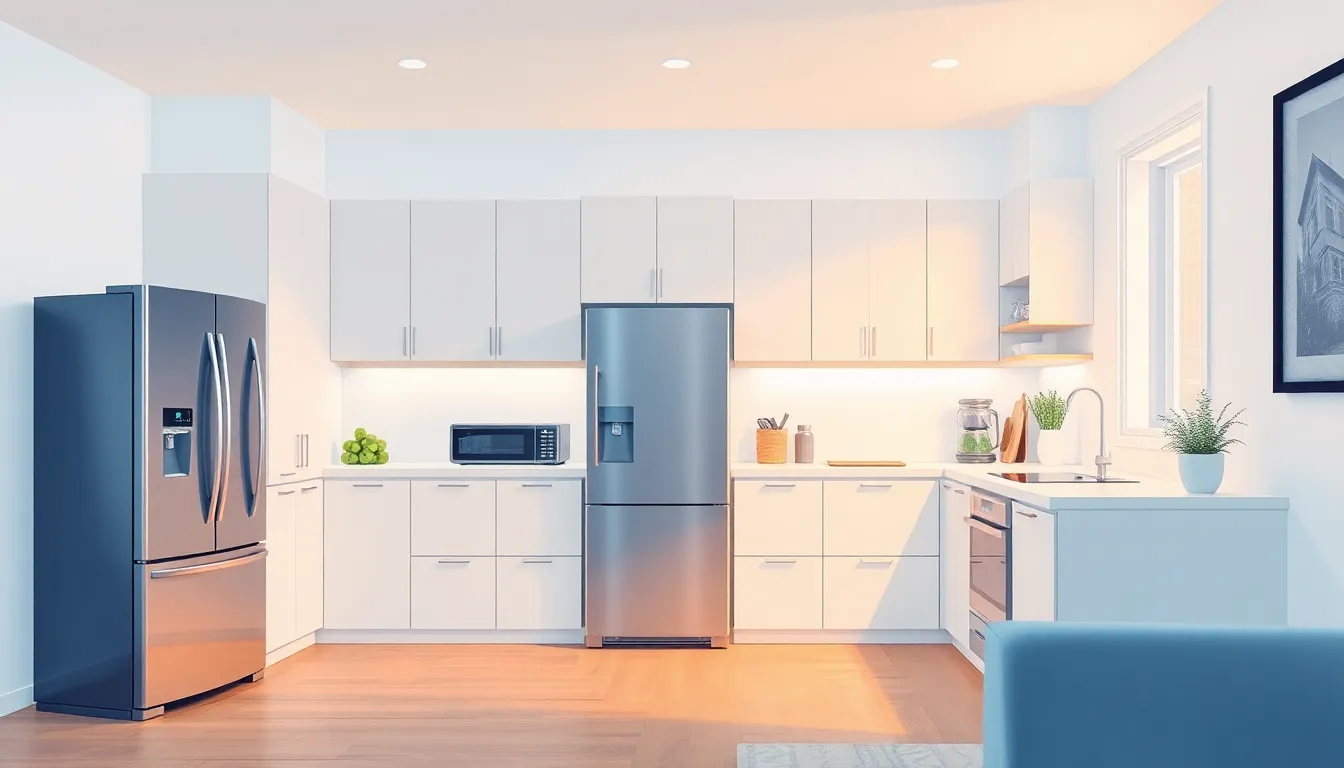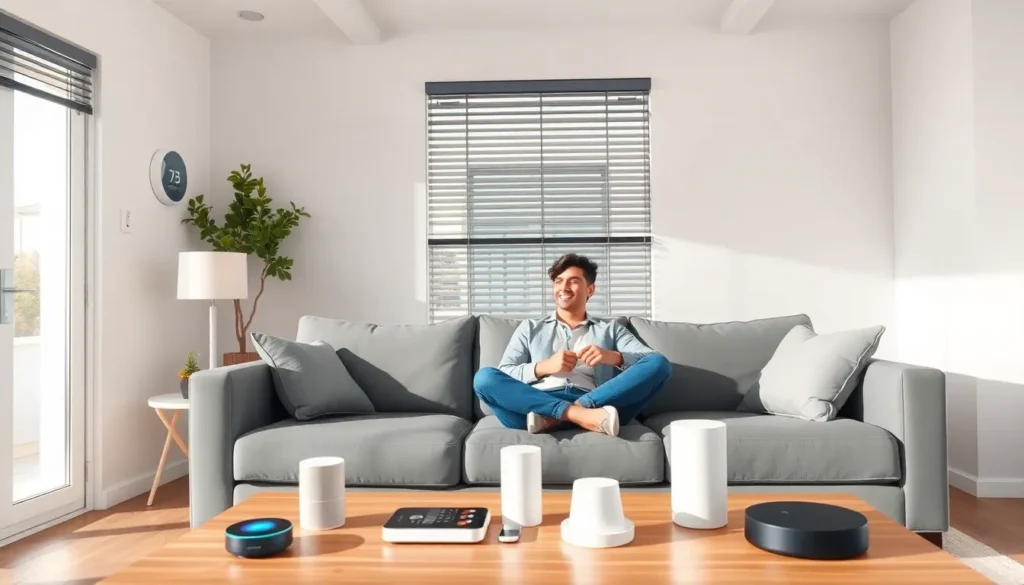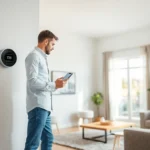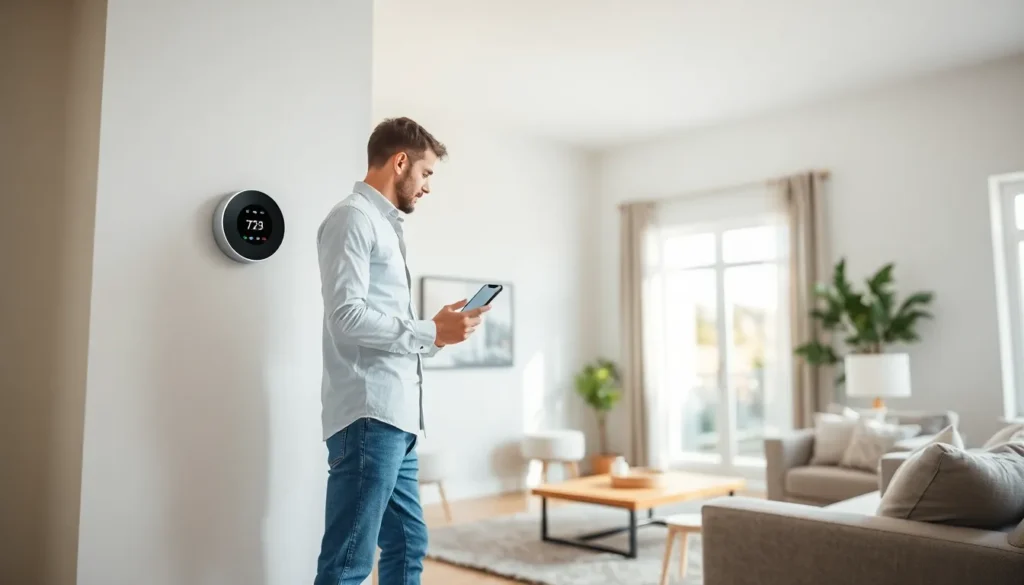Imagine waking up to a home that knows you better than your best friend. Smart living technology isn’t just a trend; it’s a game changer that transforms daily routines into seamless experiences. From adjusting the thermostat while you snooze to brewing coffee just as you roll out of bed, these gadgets make life feel like a sci-fi movie—minus the aliens, of course.
As homes get smarter, they’re not just about convenience; they’re about creating a lifestyle that’s efficient and fun. Whether it’s controlling your lights with a voice command or having your fridge remind you when you’re out of milk, smart living tech is here to save the day. So buckle up and get ready to explore how these innovations can make your life easier, leaving you more time for the important things—like binge-watching your favorite show.
Table of Contents
ToggleOverview of Smart Living Technology
Smart living technology reshapes how individuals manage their homes and daily routines. This technology streamlines numerous tasks, enhancing productivity and comfort. Automated systems control lighting, temperature, and security systems, providing efficient management of resources.
Devices like smart thermostats optimize energy consumption by learning preferences and adapting to user schedules. Voice-controlled assistants facilitate hands-free operation, allowing easy access to information and control over various home features. Sensor-equipped gadgets monitor environmental conditions, ensuring optimal living spaces year-round.
Entertainment systems also benefit from smart technology. Streaming devices allow users to access a wide range of content with simple voice commands or smartphone applications. Automated blinds and curtains adjust according to time of day, enhancing both comfort and ambiance in living areas.
Data security remains a priority within smart living environments. Smart locks and surveillance cameras provide homeowners peace of mind with remote access and real-time alerts. Many of these systems integrate seamlessly with smartphones, allowing users to monitor their homes from anywhere.
Sustainability plays a significant role in smart living. Energy-efficient smart appliances reduce energy waste and lower utility bills. This eco-friendly aspect resonates with individuals looking to diminish their carbon footprint.
Overall, smart living technology represents a shift towards convenience and efficiency. By simplifying daily tasks, these innovations allow for more time spent on enjoyable activities and personal interests.
Benefits of Smart Living Technology

Smart living technology offers substantial advantages that transform daily experiences. These innovations elevate convenience and efficiency, making life simpler and more enjoyable.
Enhanced Convenience
Smart devices streamline daily tasks, reducing effort for users. Automated systems manage everything from temperature control to lighting adjustments. Voice-activated assistants handle requests, allowing for hands-free operation. Sensors detect movement and adjust settings automatically, enhancing comfort without manual input. Smart appliances, such as refrigerators and ovens, can be monitored remotely, ensuring that routines remain uninterrupted. By integrating lifestyle needs, smart living solutions improve overall home management while maximizing time for leisure activities.
Increased Efficiency
Efficiency gains manifest through energy savings and resource optimization. Smart thermostats adjust temperatures based on occupancy patterns, leading to reduced energy waste. Automated lighting turns off in empty rooms, further lowering utility costs. Smart irrigation systems optimize water usage in gardens, ensuring plants receive appropriate hydration without excess. Many devices collect data on usage patterns, providing insights for improved decision-making. With systems coordinating seamlessly, residents experience enhanced productivity and lower operational costs. Smart living technology fundamentally shifts home management into a realm of efficiency and responsibility.
Popular Smart Living Devices
Smart living devices significantly enhance daily life, offering various functionalities that improve convenience and efficiency. Below are key categories of these devices.
Smart Home Automation Systems
Smart home automation systems streamline household management. Centralized control enables users to adjust lighting, temperature, and appliances from one device. Many systems support voice commands and mobile apps, making interactions intuitive. Enhanced features include scheduling options that allow gadgets to operate autonomously. For instance, smart thermostats optimize heating and cooling based on homeowners’ habits, reducing energy costs. Integration with other smart devices adds versatility, promoting a cohesive home environment. Notably, popular brands like Google and Amazon provide innovative solutions that simplify everyday tasks.
Smart Security Solutions
Smart security solutions enhance safety through advanced technology. These devices include smart locks, cameras, and alarm systems that enable remote monitoring. Homeowners can receive real-time alerts via mobile applications, ensuring they’re informed of any unusual activity. Two-way audio features allow direct communication through doorbell cameras, creating a secure entry point. Additionally, smart surveillance systems often include night vision and motion detection capabilities. Leading brands focus on user-friendly interfaces, ensuring accessibility. In summary, effective smart security solutions provide peace of mind, ensuring homes remain secure while allowing for constant monitoring.
Challenges and Considerations
Smart living technology introduces various challenges that require careful consideration. Ensuring user security and privacy becomes critical as more devices connect to the internet and collect personal data.
Privacy Concerns
Privacy issues pose significant challenges for smart living technology users. Devices often collect sensitive information, such as usage patterns and personal preferences. Data breaches can jeopardize this information, creating risks for homeowners. Implementing strong encryption and robust security measures is essential for protecting user data. Additionally, understanding how companies store and use data enhances user trust. Consumers should consider potential vulnerabilities when selecting smart devices, opting for brands that prioritize privacy. Organizations must comply with data protection regulations to ensure safe user experiences.
Integration Issues
Integration presents another hurdle for smart living technology. Different devices from various manufacturers may use incompatible communication protocols. Compatibility challenges arise when trying to control multiple devices through a single platform, complicating the user experience. Users often face difficulties linking devices for seamless operation. Choosing products that support common standards like Zigbee or Z-Wave can mitigate these challenges. Smart home hubs can also facilitate integration, allowing for centralized control of multiple devices. Simplifying the setup process encourages greater user adoption of smart technology.
Future of Smart Living Technology
Innovations in smart living technology promise to redefine everyday experiences. Smart devices will increasingly feature artificial intelligence, enabling them to learn user preferences and enhance interaction. Predictive analytics will support efficient energy management, automatically adjusting settings based on historical data and weather forecasts.
Integration among devices is another key focus for the future. Manufacturers are likely to prioritize compatibility, creating ecosystems that allow seamless communication across products. This interoperability simplifies user experiences, making it easier for consumers to manage their smart environments.
Cybersecurity will also remain a critical consideration. As reliance on connected devices grows, so does the potential for data breaches. Developers will implement advanced security measures, including stronger encryption protocols and user privacy features. Enhanced transparency regarding data collection practices will help users feel more secure.
Sustainability aspects will gain prominence as well. Smart technology reduces energy consumption, and as more homes adopt these innovations, significant environmental benefits could emerge. Smart appliances often feature energy-efficient designs that contribute to lower carbon footprints and reduced utility costs.
Advanced smart home automation systems will likely evolve, offering smarter and more intuitive controls. Voice commands and mobile applications will continue to simplify operation, allowing users to manage their homes with ease. User-friendly interfaces will enhance accessibility for all demographics.
Lastly, emerging technologies such as 5G and Internet of Things connectivity will drive the expansion of smart living technology. Faster internet speeds and better connectivity will support real-time data processing, making home management even more efficient. Consumers can anticipate a future where comfort, efficiency, and security blend seamlessly through smart living solutions.
Smart living technology is revolutionizing how individuals manage their homes and daily routines. With innovations that prioritize convenience efficiency and security these devices empower users to enjoy a more streamlined lifestyle. As advancements continue to emerge the integration of artificial intelligence and enhanced connectivity will further elevate the smart living experience.
Embracing these technologies not only simplifies tasks but also promotes sustainability and energy savings. By prioritizing user security and compatibility among devices homeowners can confidently adopt smart solutions that enhance their quality of life. The future of smart living promises to blend comfort and efficiency seamlessly allowing individuals to focus on what truly matters.













